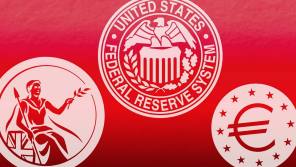

If you’ve been reading financial news in the last year, it might seem that passive investing is taking over the industry as money pours into all manners of index funds and ETFs.
While the trend has fueled a widespread debate about “passive versus active,” this conversation largely misses the mark for money managers who work with individual clients.
Framing the debate solely in terms of “active versus passive” obscures the most important consideration for helping a client achieve long-term success: service.
Adherents within both passive and active camps will claim their style of investing is “best”, but neither is worth a darn if it is not paired with the service and guidance necessary to keep clients committed to a sound strategy.
True passive investing means attempting to mirror a stock index consistently over time—no deviating, no mixing and matching different indexes to capitalise on economic trends.
Other than perhaps rebalancing now and again to maintain target asset allocations, there is nothing to do but hold. Not for weeks, months, or even a few years, but for the entirety of an investment time horizon.
This approach is based on the belief that markets are so efficient that trying to time or beat them is a fool’s errand.
Active investors, on the other hand, attempt to beat an index over time by weighting certain stock categories differently. Adherents believe—or at least their actions indicate they believe—markets aren’t perfectly efficient, and savvy selections can yield better returns over time.
Conventional wisdom presumes this style is fading—but the evidence is mixed to say the least. While passive products like ETFs and index funds can be used in a true passive fashion, everything depends on the investor. Passive is as passive does—and virtually no one actually does passive.
Successful investing—whether active or passive—takes incredible resolve and patience. This is something few are capable of, especially when bombarded with daily headlines urging action.
Your clients’ investment success is much more likely to be determined by their behavior and your service than by whether they use an index product or not. Listening, educating, asking questions, and providing timely advice have always been hallmarks of trusted financial advice.
Eight years into this bull market, we are likely approaching a trying stretch for investors: Bull markets usually surge for a long time until they peak, fostering greed. Then, after markets roll over, the ensuing bear market will eventually bring mass fear.
That emotional roller coaster often triggers folks to trade! Chase heat! Sell out! This holds true whether they’re invested in individual stocks, index funds or any other security. Trading is arguably easier in index funds expressly because they are easier and cheaper to liquidate.
Market data supports this. One popular S&P 500 ETF is the most-traded security in the US and even dyed-in-the-wool active managers are getting in on the game.
Stock-picking institutional investors now buy more index ETFs than individual investors.
When firms that exist to deliver above-benchmark returns for their clients are loading up on index funds, you can be pretty sure they’re active tools.
That said, the investing world is certainly buying index products more often. The trend is fashionable but, as with many investing trends, pitfalls await.
Eighty-five per cent of assets under management in top index funds is focused on American companies—it is a de-facto US investment strategy, in most cases.
Given the US has outperformed non-US for the last four years, going “passive” generally looks a whole lot like chasing heat.
Since the inception of the MSCI indexes in 1970, US stocks have never outperformed foreign for five consecutive calendar years. There is no set rotation schedule, so by itself this doesn’t mean a lot.
But there will be a rotation eventually, and when it happens, history shows foreign can lead for a long time and by a lot, just as US stocks have recently.
During the 2002 – 2007 bull market, for example, US stocks gained 119 per cent, while non-US developed country stocks did far better, up 222 per cent.
This highlights a key point: when foreign outperforms, what will the so-called passive investor” do? Remain passive or take action? History and human psychology suggest the latter.
In my view, both active and passive professionals must counsel clients through big up and down markets, protecting them from harmful mental miscues, such as shunning global diversification because one region has outperformed in recent years.
This is a big challenge, requiring both resources and commitment. But it’s also an unmet opportunity.
Tremendous client service - not walking someone’s dog when they ask, but counseling them through hard times - isn’t the norm in our industry, and those who embrace it can set themselves apart.
This is one active choice all investment professionals, regardless of investment philosophy, should make.
Damian Ornani is chief executive of Fisher Investments



